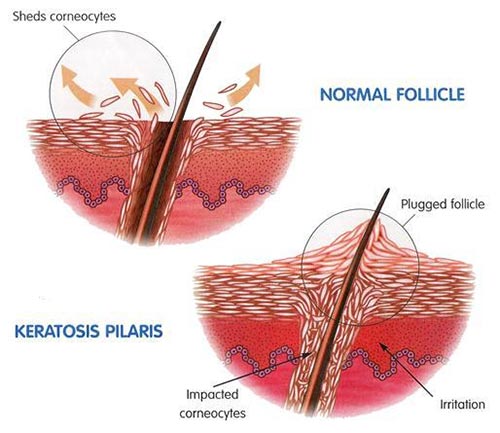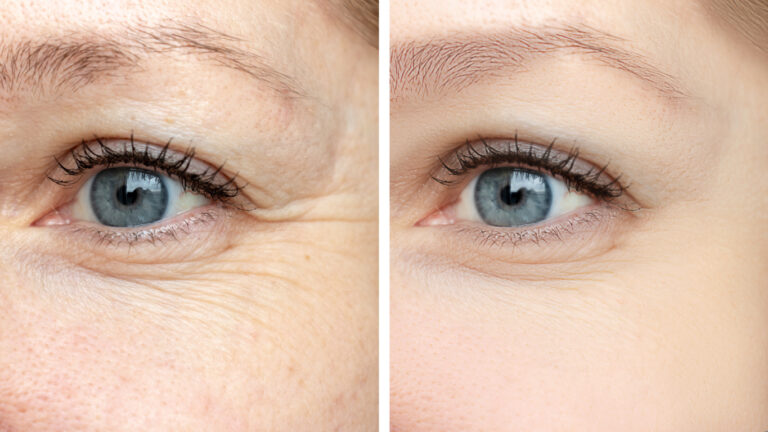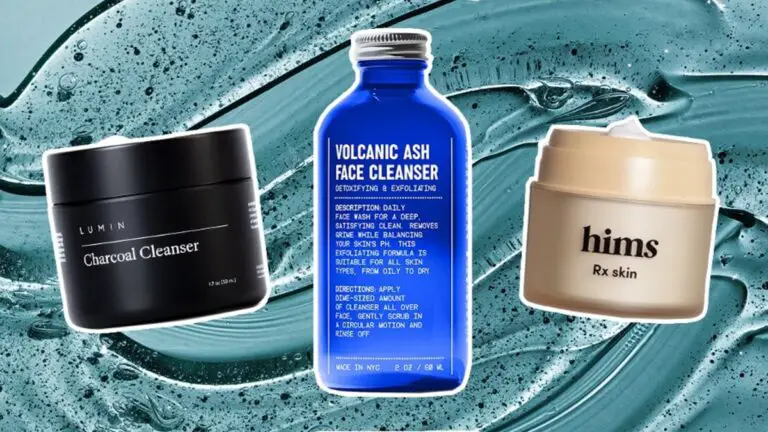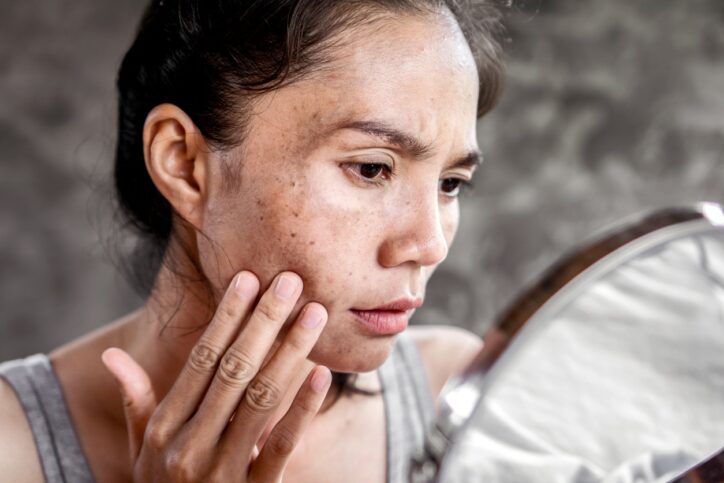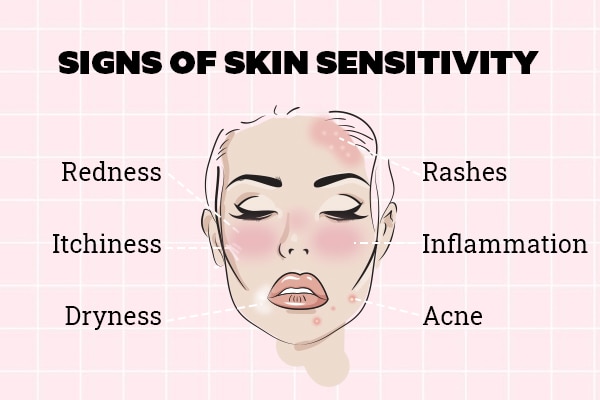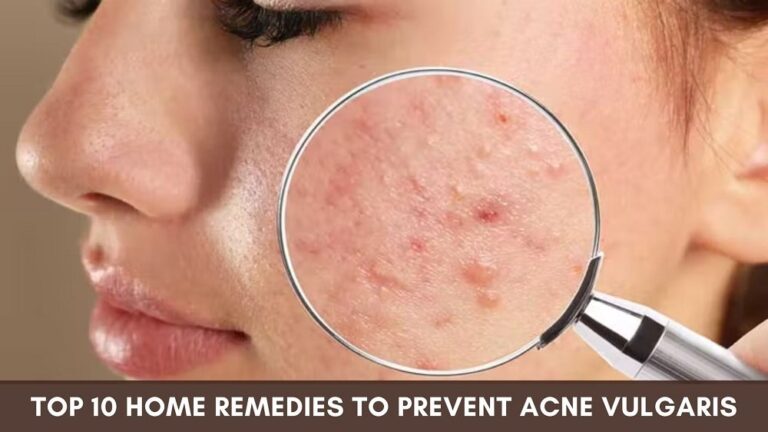How to Prevent Keratosis Pilaris
Introduction
Welcome to Premier Health RX! If you’ve ever noticed small, red bumps on your skin, particularly on your arms, thighs, or cheeks, you might be dealing with a common skin condition known as Keratosis Pilaris (KP). While KP is harmless, it can be bothersome and affect your skin’s appearance and texture. In this article, we’ll explore what Keratosis Pilaris is, what causes it, and most importantly, how to prevent and manage it effectively.
What is Keratosis Pilaris?

Keratosis Pilaris, often referred to as KP, is a common and benign skin condition that affects people of all ages. It’s characterized by small, red, or flesh-colored bumps that typically appear on the upper arms, thighs, buttocks, and sometimes on the face. These bumps often have a rough, sandpaper-like texture, which can make the affected areas feel bumpy and appear less smooth than the surrounding skin.
KP is a result of a buildup of keratin, a natural protein found in the outer layer of the skin. Normally, keratin helps protect your skin from infections and other harmful substances. However, in individuals with KP, the excess keratin accumulates around hair follicles, leading to the formation of these tiny bumps. It’s essential to note that Keratosis Pilaris is not contagious and doesn’t pose any serious health risks.
Key Characteristics of Keratosis Pilaris:
- Bumps: The most noticeable symptom of KP is the appearance of small, raised bumps on the skin.
- Texture: These bumps can feel rough, like sandpaper, and may be mistaken for acne.
- Color: The bumps can range from red to flesh-colored.
- Location: Common areas for KP include the upper arms, thighs, buttocks, and sometimes the face.
KP can be particularly common in children and adolescents, but it can persist into adulthood as well. The condition may come and go over the years, and its severity can vary from person to person. While it is not a serious medical condition, many people seek treatment to improve the appearance and texture of their skin.
Prevalence of Keratosis Pilaris:
Keratosis Pilaris is a widespread skin condition. In fact, it’s estimated that over 40% of adults and 50-80% of adolescents in the United States experience some degree of KP. It can also affect individuals of all skin types, although it may be more noticeable in people with fair skin.
Is it Dermatitis or Something Else?
It’s essential not to confuse Keratosis Pilaris with other skin conditions like dermatitis or eczema. While these conditions may share some similarities in terms of skin redness and itchiness, KP is primarily characterized by the presence of those small, goosebump-like bumps. Understanding the specific symptoms and appearance of KP is crucial for accurate diagnosis and appropriate management.
Understanding the Causes of Keratosis Pilaris
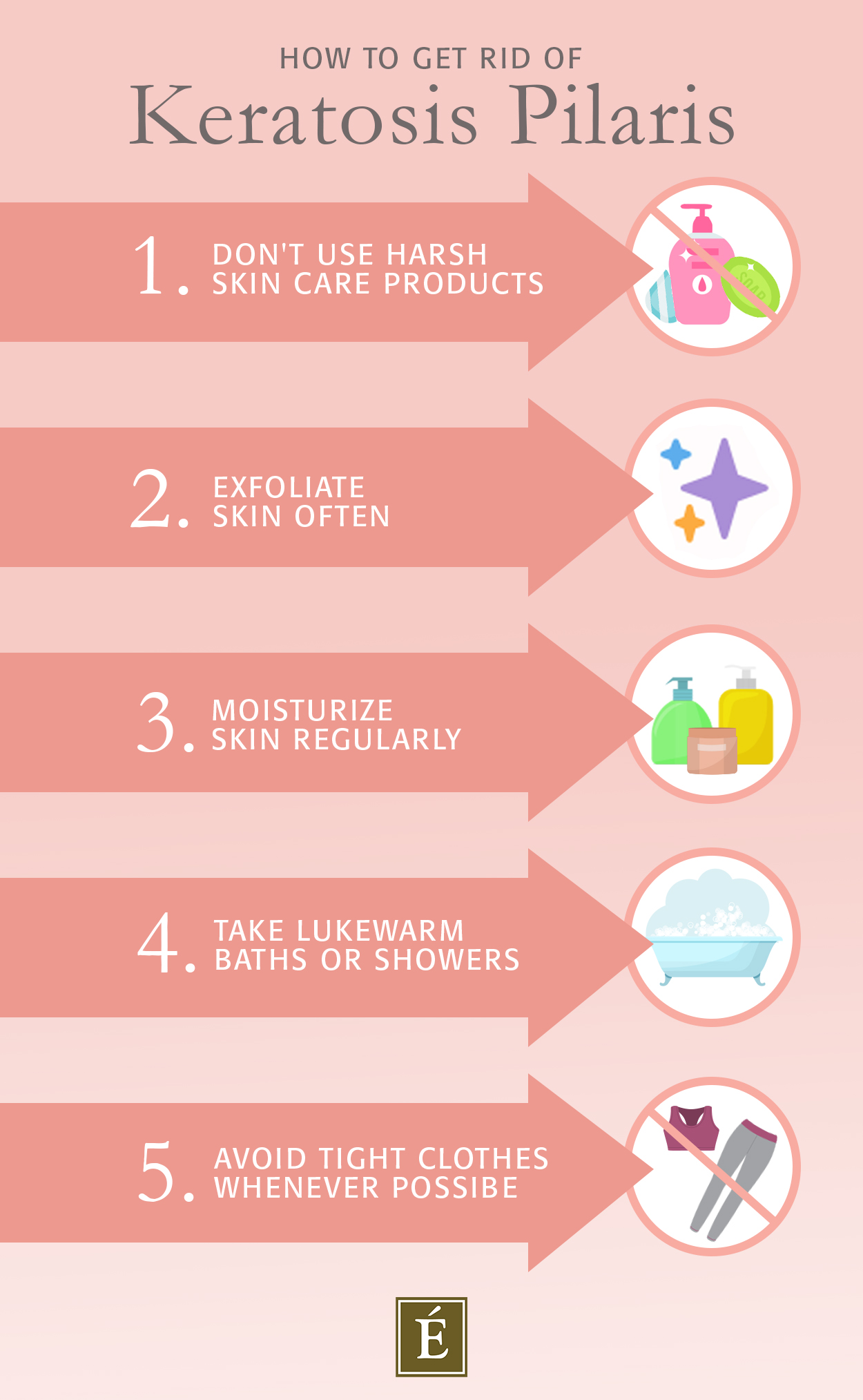
Keratosis Pilaris is a common skin condition, but its exact cause isn’t fully understood. However, several factors are believed to contribute to the development of KP. Understanding these potential causes can help you manage and prevent this skin condition effectively.
Potential Causes and Contributing Factors:
- Genetics: KP often runs in families, suggesting a genetic component. If your parents or close relatives have KP, you may be more likely to develop it.
- Excess Keratin Production: One of the primary factors behind KP is the overproduction of keratin, a natural protein found in the skin. This excess keratin can clog hair follicles, leading to the formation of bumps.
- Blockage of Hair Follicles: When hair follicles become blocked with excess keratin, it can trap hair beneath the skin’s surface, causing inflammation and the characteristic bumps.
- Dry Skin: Individuals with dry skin are more prone to developing KP. Insufficient moisture in the skin can exacerbate the condition, making the bumps more noticeable and rough.
Triggers and Aggravating Factors:
While the exact cause of KP remains uncertain, certain triggers and factors can exacerbate the condition or make it more noticeable:
- Cold Weather: KP often worsens during the winter months when the air is dry and humidity levels are low. Cold weather can lead to drier skin, exacerbating the appearance of bumps.
- Friction: Constant rubbing or friction on affected areas, such as tight clothing, can irritate KP and make it more pronounced.
- Harsh Skincare Products: Using harsh soaps or exfoliants can further irritate the skin, potentially worsening KP symptoms.
- Hormonal Changes: Hormonal fluctuations, such as those during puberty, pregnancy, or menopause, can impact KP’s severity.
Other Skin Conditions:
KP can sometimes be associated with other skin conditions, such as eczema or atopic dermatitis. These conditions may share similar symptoms or risk factors, but they are distinct skin disorders with their own causes and treatments.
Understanding the potential causes and aggravating factors of Keratosis Pilaris is crucial for effective prevention and management. In the following sections, we’ll explore strategies and skincare routines to help alleviate the symptoms and improve the appearance of your skin.
Effective Prevention Strategies for Keratosis Pilaris

While Keratosis Pilaris (KP) may not be entirely preventable, several strategies can help minimize its occurrence and alleviate its symptoms. These approaches aim to reduce the buildup of keratin in hair follicles and maintain healthy skin. Here are some effective prevention strategies to consider:
1. Gentle Exfoliation:
Regular exfoliation can help remove dead skin cells and prevent keratin buildup. However, it’s crucial to use a gentle exfoliant to avoid irritating the skin. Look for exfoliating products that contain salicylic acid or alpha hydroxy acids (AHAs).
2. Moisturize Daily:
Keeping your skin well-hydrated can significantly reduce the severity of KP. Use a moisturizer that’s suitable for sensitive skin and free from harsh chemicals or fragrances. Apply it after bathing when your skin is still slightly damp to lock in moisture.
3. Avoid Hot Water:
Hot water can strip the skin of its natural oils, making KP worse. Opt for lukewarm water when showering or bathing, and avoid long, hot baths.
4. Choose the Right Skincare Products:
Use mild, fragrance-free skincare products that are suitable for sensitive skin. Avoid harsh soaps and cleansers that can dry out your skin or worsen irritation.
5. Humidify Your Environment:
During dry seasons or in areas with low humidity, using a humidifier in your home can help maintain proper skin moisture levels. This can prevent your skin from becoming excessively dry and exacerbating KP.
6. Wear Loose-Fitting Clothing:
Tight clothing can cause friction and irritation, which may worsen KP symptoms. Opt for loose-fitting, breathable fabrics to reduce friction on affected areas.
7. Maintain a Healthy Diet:
While there’s no specific diet for KP, a balanced and nutritious diet can promote overall skin health. Ensure you’re getting essential vitamins and minerals, especially vitamins A and C, which are beneficial for skin health.
8. Manage Stress:
Stress can exacerbate skin conditions, including KP. Practice stress-reduction techniques such as meditation, yoga, or deep breathing exercises to keep your skin calm and healthy.
9. Seek Professional Advice:
If KP is severe or causing significant discomfort, consult a dermatologist. They can recommend specific treatments, such as topical creams or laser therapy, to manage the condition effectively.
It’s important to note that while these prevention strategies can help improve the appearance and comfort of your skin, KP may not be entirely eliminated. Be patient and consistent in your skincare routine, and consult a healthcare professional for personalized advice if needed. By following these strategies, you can take proactive steps towards minimizing the impact of Keratosis Pilaris on your skin.
Skincare Routine for Keratosis Pilaris
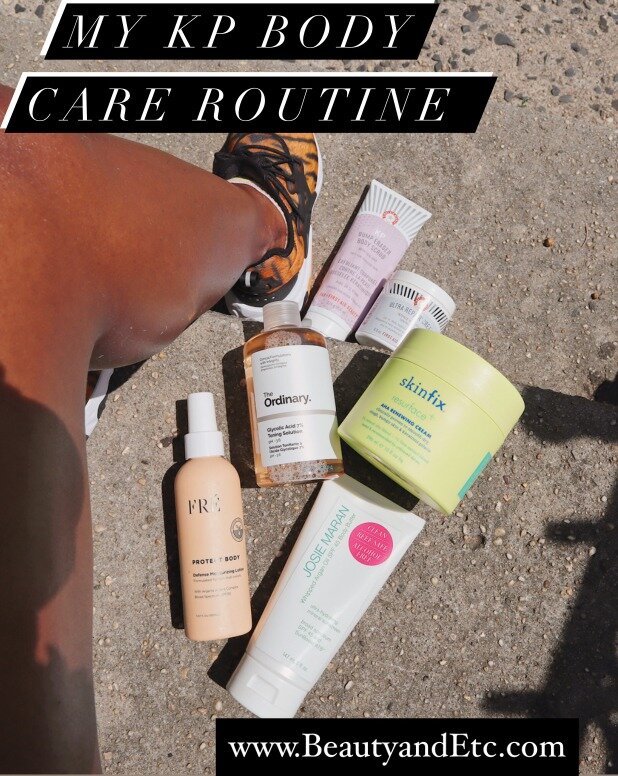
Developing a consistent skincare routine tailored to your skin’s needs can significantly improve the appearance and manageability of Keratosis Pilaris (KP). Here’s a comprehensive skincare routine designed to address KP effectively:
Morning Routine:
1. Gentle Cleansing: Start your day by cleansing your skin with a mild, fragrance-free cleanser. Avoid harsh soaps or scrubs that can irritate the skin. Pat your skin dry with a soft towel; do not rub vigorously.
2. Exfoliation: Two to three times a week, use a gentle exfoliating product with salicylic acid or alpha hydroxy acids (AHAs). This will help remove dead skin cells and reduce keratin buildup. Avoid excessive exfoliation, as it can lead to irritation.
3. Moisturize: Apply a hydrating, fragrance-free moisturizer to damp skin. This will help lock in moisture and keep your skin hydrated throughout the day.
4. Sunscreen: Protect your skin from UV damage by applying a broad-spectrum sunscreen with SPF 30 or higher. UV rays can exacerbate KP symptoms, so daily sun protection is crucial.
Evening Routine:
1. Gentle Cleansing: In the evening, cleanse your skin again using the same gentle, fragrance-free cleanser as in the morning.
2. Exfoliation (Alternate Days): On alternate evenings, continue with your exfoliation routine to promote smoother skin. Remember not to overdo it to avoid irritation.
3. Hydrating Products: Apply a hydrating lotion or cream containing ingredients like ceramides or hyaluronic acid to lock in moisture while you sleep.
Weekly Treatments:
1. Body Scrub: Once a week, consider using a mild body scrub or loofah during your shower to gently exfoliate the affected areas. Be cautious not to be too aggressive to avoid skin irritation.
2. Moisturizing Masks: Consider using a hydrating or moisturizing mask on the affected areas once a week. This can provide an extra boost of hydration to alleviate KP symptoms.
Additional Tips:
- Patience: Results may take time, so be patient and consistent with your skincare routine.
- Avoid Picking: Resist the urge to pick or scratch KP bumps, as this can worsen the condition and lead to scarring.
- Consult a Dermatologist: If your KP is severe or doesn’t improve with over-the-counter products, seek guidance from a dermatologist. They can recommend prescription-strength treatments or procedures like laser therapy.
Remember that individual responses to skincare routines may vary, so it’s essential to tailor your regimen to your skin’s unique needs. By following these steps and remaining consistent, you can effectively manage Keratosis Pilaris and achieve smoother, healthier-looking skin.
Dietary and Lifestyle Changes for Managing Keratosis Pilaris

While Keratosis Pilaris (KP) is primarily a skin condition, certain dietary and lifestyle changes can help support overall skin health and reduce the severity of KP symptoms. Incorporating the following habits into your daily life can complement your skincare routine and contribute to smoother, healthier skin:
1. Stay Hydrated:
Proper hydration is crucial for maintaining healthy skin. Drink an adequate amount of water throughout the day to keep your skin well-hydrated. This can help reduce dryness and the appearance of KP bumps.
2. Consume Omega-3 Fatty Acids:
Omega-3 fatty acids found in fatty fish (such as salmon, mackerel, and sardines), flaxseeds, and walnuts have anti-inflammatory properties that can benefit your skin. Include these foods in your diet to help manage KP-related inflammation.
3. Vitamins and Antioxidants:
Vitamins A and C play vital roles in skin health. Foods rich in vitamin A, like sweet potatoes and carrots, can help prevent keratin buildup, while vitamin C from citrus fruits and strawberries promotes collagen production and skin repair.
4. Limit Dairy and Processed Foods:
Dairy products and processed foods may contain additives and hormones that can exacerbate skin conditions like KP. Reducing your intake of these items may help improve your skin’s overall health.
5. Avoid Excessive Sugar:
Excess sugar in your diet can lead to inflammation and worsen skin conditions. Limit sugary snacks and beverages to help keep inflammation at bay.
6. Maintain a Balanced Diet:
A balanced diet rich in fruits, vegetables, lean proteins, and whole grains provides essential nutrients for overall health, including your skin. Avoid extreme diets and aim for a variety of nutrient-rich foods.
7. Stress Management:
Chronic stress can exacerbate skin conditions, including KP. Practice stress management techniques such as yoga, meditation, or deep breathing exercises to keep stress levels in check.
8. Gentle Exercise:
Regular, gentle exercise can promote blood circulation and help maintain overall skin health. Avoid excessive sweating, as it can irritate KP-prone areas. Choose breathable workout clothing to minimize friction.
9. Humidify Your Living Space:
If you live in a dry climate or during the winter months, consider using a humidifier in your home. Proper indoor humidity can prevent excessive skin dryness, which can worsen KP.
It’s important to note that while dietary and lifestyle changes can support your skin’s health and potentially reduce KP symptoms, results may vary from person to person. Additionally, these changes should complement your skincare routine, not replace it. If you’re unsure about making significant dietary changes, consult with a healthcare professional or a registered dietitian for personalized guidance.
FAQs
1. What is Keratosis Pilaris (KP)?
Keratosis Pilaris, often referred to as KP, is a common and benign skin condition characterized by small, red or flesh-colored bumps that typically appear on the upper arms, thighs, buttocks, and sometimes the face. These bumps have a rough, sandpaper-like texture.
2. Is KP contagious?
No, Keratosis Pilaris is not contagious. It’s a genetic skin condition and cannot be transmitted from person to person through contact.
3. Can KP be completely cured?
While there is no known cure for Keratosis Pilaris, it can be effectively managed and its symptoms reduced through proper skincare, dietary changes, and lifestyle adjustments.
4. Is it possible for adults to develop KP, or is it primarily a childhood condition?
KP can affect individuals of all ages, including adults. While it’s often more common in childhood and adolescence, it can persist into adulthood.
5. Can I pop or squeeze the KP bumps?
No, it’s not recommended to pop or squeeze KP bumps, as this can lead to inflammation, scarring, and potentially worsen the condition. It’s best to follow a gentle skincare routine and avoid picking at the bumps.
6. Are there any medical treatments for KP?
Yes, if your KP is severe or doesn’t respond to over-the-counter treatments, you can consult a dermatologist. They may recommend prescription-strength creams or procedures like laser therapy to manage the condition.
7. What kind of moisturizer is best for KP?
The best moisturizer for KP is one that is fragrance-free and suitable for sensitive skin. Look for products that contain ingredients like ceramides or hyaluronic acid to help lock in moisture.
8. Can KP be triggered or worsened by specific weather conditions?
Yes, cold and dry weather can exacerbate KP symptoms, as it can lead to drier skin. Humidifying your living space and using appropriate skincare products during these conditions can help manage KP.
9. Are there any natural remedies for KP?
While there are no guaranteed natural remedies for KP, some individuals have reported improvement by using coconut oil, gentle exfoliation with sugar scrubs, or applying vitamin E oil to affected areas. However, results can vary, so it’s important to consult with a dermatologist for personalized advice.
10. Can KP go away on its own?
KP may improve with age, and some individuals may find that their symptoms become less noticeable as they get older. However, for most people, proper skincare and management are necessary to control the condition.
Conclusion
Caring for your skin and effectively managing Keratosis Pilaris (KP) requires a combination of strategies, including a tailored skincare routine, dietary and lifestyle adjustments, and a commitment to consistency. While KP may not have a definitive cure, the following key takeaways can help you achieve smoother, healthier skin:
Be Consistent:
Consistency is key when it comes to managing KP. Stick to your skincare routine and incorporate the recommended lifestyle changes to see the best results.
Choose the Right Products:
Opt for gentle, fragrance-free skincare products and moisturizers suitable for sensitive skin. Exfoliate in moderation and protect your skin from harsh elements, such as hot water and excessive sun exposure.
Consider Dietary Adjustments:
Introduce skin-friendly foods into your diet, including those rich in omega-3 fatty acids, vitamins A and C. Reduce or eliminate processed foods, dairy, and excess sugar to support skin health.
Manage Stress:
Stress can impact skin conditions like KP. Incorporate stress management techniques into your daily routine to keep your skin calm and balanced.
Consult a Dermatologist:
If your KP is severe or doesn’t respond to over-the-counter treatments, seek professional advice from a dermatologist. They can provide personalized recommendations and treatments to address your specific needs.
Remember that KP is a common and benign skin condition that affects many individuals. While it may pose cosmetic concerns, it doesn’t pose significant health risks. With the right care and commitment to a skin-friendly lifestyle, you can effectively manage KP and enjoy smoother, more comfortable skin.
Thank you for joining us on this journey to better understand and prevent Keratosis Pilaris. We hope this guide has provided you with valuable insights and actionable steps to help you on your path to healthier, happier skin.

